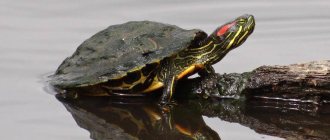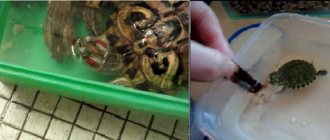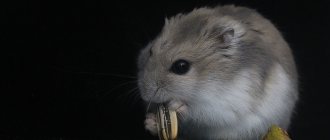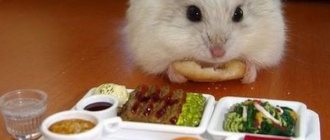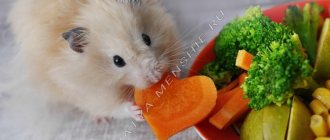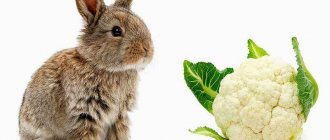What do hedgehogs eat in the wild?
Under natural conditions, hedgehogs are omnivores. The main part of the diet of prickly animals consists of various insects. On occasion, they eat snails, earthworms, newborn mice, small poisonous snakes, and destroy bird nests located on the ground.
Hedgehogs readily eat plant roots and seeds. They like many vegetables, mushrooms, berries and fruits. Gluttonous and tireless animals perform the work of the territory’s orderlies, so they do not hesitate to taste carrion.
Diseases
Usually, at home, hedgehogs can get injured at home, so the owner must closely monitor his pet, which he lets out for a walk around the apartment.
If the temperature regime is not observed or there are drafts, the hedgehog may catch a cold.
If you eat improperly, problems associated with the gastrointestinal tract may develop: constipation, diarrhea, bloating. With a lack of vitamins, vitamin deficiency may develop.
Hedgehogs may have parasites: ticks, fleas, worms; an experienced veterinarian can tell you how to deal with them. Allergic reactions to cleaning products, food, and even cage litter are possible. Hedgehogs and even African hedgehogs are carriers of rabies. But a hedgehog can only become infected with rabies through interaction with another infected animal.
The basis of the diet of a pygmy hedgehog
Breeders bred a breed of miniature hedgehogs for keeping at home. They, like their wild relatives, need a source of chitin. On the other hand, African animals do not spend a lot of energy searching for their own food and do not hibernate.
This explains why their diet should include foods that are low in fat and high in protein.
Not a single ready-made food contains the required amount of carbohydrates, proteins, fats, fiber, vitamins and microelements. Hedgehogs receive all the necessary components only with well-planned feeding.
Natural food
The basis of the natural diet is boiled meat without salt.
Among the preferred options:
- lean beef, horse meat, turkey breast, chicken - 1 tbsp. l per serving;
- chicken hearts, stomachs, necks - 2 pieces each;
- river, sea fish, squid, shrimp - 1 tbsp. l per serving 1 time per week.
The cooled meat is cut into small pieces. For young, elderly and weakened animals, it is ground into minced meat.
Every day the animals need to be given insects. Some species are suitable for daily feeding, while others, which are too fatty, can be added to the hedgehogs’ diet periodically.
| Insect name | How many pieces to give per day | How many times a week can you add to your diet? |
| Mealworm | 2-3 | 2 |
| Zofobas | 2 | 2 |
| Silkworm | 1-2 | 2 |
| Madagascar hissing cockroach | 2 medium size | 1 |
| Marbled, American, Turkmen cockroach | 10-15 | Daily |
| House cricket, banana, two-spotted | 25-30 | Daily |
| Cockroach "Death's Head" | 2 medium size | Daily |
| Argentine cockroach | 4-5 | Daily |
| Grasshopper | 10-15 | Daily |
The supply of insects is frozen in batches, then taken out of the freezer in advance and given to the hedgehog when they thaw to room temperature. They alternate different types, observe the pet, and determine what he likes best.
When choosing insects, the age of the pet is taken into account. Young animals easily cope with the hard chitinous coating of Madagascar cockroaches. For older animals, it is wiser to offer crickets, grasshoppers and other representatives with a soft chitinous cover.
Dry food
Pet stores sell specialized food for prickly companions, but some of them are intended for European hedgehogs. They contain honey, nuts, yeast, grains, and raisins.
Such components are poorly tolerated by dwarf representatives. Even in small quantities, such food for hedgehogs causes digestive upset in hedgehogs. Before purchasing a finished product, you must carefully read the list of ingredients.
For African pygmy hedgehogs, manufacturers have developed separate dry foods that take into account the characteristics and needs of the animals. Breeders recommend buying Vitakraft, Spikes, and Insect-Eater Diet wet food.
Food for cats and dogs
Many owners give their pets premium ready-made food for cats and dogs. They do not contain soy, corn, wheat, or dyes, but have optimal characteristics:
- 30% protein;
- 8-15% fat;
- 4% fiber or more.
Breeders recommend food from the brands Royal Canin, Gina Elite, ProPlan, Purina One, Acana. 1-2 tbsp. l of granules per day will replace the meat component in the diet. Hedgehogs should still be given insects daily.
Fruits and vegetables
Plant foods improve the functioning of the animal's intestines and serve as a source of vitamins, biologically active substances, macro- and microelements. From vegetables the animals are given:
- pumpkin;
- cucumber;
- zucchini;
- carrot;
- bell pepper;
- asparagus;
- broccoli;
- spinach.
In small quantities, they are occasionally treated to green peas and green beans. Before serving, vegetables are cut into small cubes.
Hedgehogs gratefully accept fruit offerings. They like:
- pear;
- peach;
- watermelon;
- strawberry;
- blueberry;
- raspberries.
The high sugar content in apples, dates, and bananas disrupts the functioning of the pancreas and causes obesity. Although prickly pets eat them willingly, caring owners rarely pamper their pets with them.
Treats
Treats for hedgehogs are fully consistent with their omnivorous feeding habits. 1-2 times a week the animals are given healthy and tasty delicacies.
Minced meat from day-old chickens. The product is rich in microelements and vitamins. It does not contain chlorine-containing substances, dangerous additives or growth stimulants. Minced meat improves the immunity of healthy and weakened animals, improves the function of the digestive system.
Newborn babies of mice, rats, hamsters. 1-2 pebbles per dose have a beneficial effect on the quality of wool, needles, skin, and strengthen the defenses of weakened and sick individuals.
- 1 raw quail egg, a piece of hard-boiled chicken egg.
- Premium soft cat food 1 tsp.
Spikes are often used as a treat. After the main meal, the animal is given 15 dry granules. This treat enriches the diet and cleans leftover food from the teeth.
Content
In the wild, a hedgehog walks tens of kilometers every night. With this in mind, the hedgehog needs as much space as possible. Without enough space, your hedgehog will show signs of depression such as excessive sleeping, refusal to eat, repetitive behavior and self-destruction. The recommended size of the cage or room in which they are kept should be at least half a square meter (0.5 m²). Multi-tiered cages designed for ferrets or rabbits give the hedgehog more space to explore without taking up unnecessary space, but when using multiple levels, keep in mind that the hedgehog has poor eyesight and can easily climb up but has difficulty descending and often appears to be They do not understand heights, so it is highly recommended that ramps and levels be completely covered to prevent falls. Some people use large glass aquariums, but they can be heavy, difficult to clean, and lack ventilation. Common housing cages are very large plastic boxes: they are cheap, easy to clean and multi-functional, but they must be of a significant size. Another popular option is the "C&C" cage, which is made from cubes and plastic, also called corrugated plastic. C&C cages can be larger than store-bought cages and can be stacked to accommodate multiple hedgehogs vertically without the need for shelves.
An example of an equipped cage for a hedgehog
The most preferred and safest material for covering the sleeping area is polyester. It doesn't tear (hedgehogs love to "rummage" in an attempt to hide before going to bed) and is easy to clean in the washing machine. Threads from which other fabrics (cotton, linen) are woven are known to wrap around hedgehogs' legs, causing amputations, so any fabric that comes into contact with a hedgehog should be carefully inspected to avoid problems. Sawdust is also a popular cage bedding, although pine and cedar are not recommended as they contain oils that are harmful to a hedgehog's lungs and skin. Other sawdust can be dangerous due to its dust content and tendency to accumulate on the skin, and others can even become lodged in a hedgehog's genitals. Careful research should be done before using unusual bedding materials.
Due to the small size of hedgehogs, obesity is a very dangerous problem and they need to exercise a lot to avoid liver problems due to excess weight. To provide the African hedgehog with the necessary exercise, it is necessary to equip the cage with a running wheel. When choosing a wheel, pay attention to designs with a solid track. If you use an open wire wheel, the hedgehog will constantly fall between the bars and may break his leg. Wheels with crossbars can also cause head injuries, as hedgehogs are known to look to both sides while moving. For this reason, bucket wheels are preferred by many hedgehog owners and recommended by most breeders. For those who want to experiment and like to work with their hands, DIY kits are available.
African hedgehogs are very active animals and love to play. The most popular and safe toys for them are various types of rolling balls, small plush toys, and various boxes/houses for hiding.
Hedgehog at two weeks of age
The temperature in the enclosure should be maintained at 22–27 °C , otherwise the hedgehog will try to hibernate. This is most easily achieved with a suitable thermostat and a ceramic lamp that emits only heat, no light. In the case of African pygmy hedgehogs, it is very important to prevent them from hibernating, because, unlike European ones, this is not typical for them and leads to death. If you notice that your hedgehog is lazy and sleeps more than usual, and if he has a cold belly, immediately warm him up by placing him on his stomach to sleep and gradually warm up. DO NOT bathe him, as sudden heating with hot water in a state of hypothermia is extremely dangerous for a hedgehog, as well as for humans. Avoid using heating pads for the same reason. Instead, hug him and wrap him in a blanket. Then increase the temperature in the cage and it is important to monitor it for at least a few days because the condition may recur.
How often should you feed an ornamental hedgehog?
The frequency of a prickly pet's food intake depends on its age and physiological state. Breeders agree that it is necessary:
- Feed an adult animal 1-2 times a day;
- growing pet 3 times;
- Organize access to an unlimited amount of food for pregnant and lactating hedgehogs.
Adult hedgehogs are given a fasting day once a week. This means that the animal is not given meat, dry food, eggs, fish, or cereals. But it receives the usual portion of insects and 1 tbsp. l chopped vegetables of several types.
Hygiene
Aside from being sensitive to temperature, hedgehogs are relatively easy to keep.
You should bathe your hedgehog once a month with baby shampoo, a toothbrush and warm water. It is important to be careful when cleaning your hedgehog's belly as this is your hedgehog's exposed skin and is his most sensitive area. In addition, your hedgehog should have its nails trimmed frequently. If the claws are too large, he may get hurt. There have been several reported cases of hedgehogs scratching their eyes and causing significant injury to themselves. When trimming a hedgehog's nails, keep in mind that they are very similar to a dog's nails in that they contain some skin. Therefore, this should be done carefully and best after bathing, as the claws will be softer. Nails can be trimmed with cuticle scissors or baby scissors.
Hedgehog after bathing
Cages should be cleaned every two weeks and bedding changed as often. The wheel needs to be cleaned every day as most hedgehogs tend to do what they need to do on the wheel.
It is strictly forbidden to give to hedgehogs
African pygmy hedgehogs are never given food from the owner's table. It is forbidden to treat them to chips, fast food, products that contain preservatives, dyes, spices, salt, flavorings and flavorings.
Your pet's diet should not contain:
- garlic, onion;
- avocado;
- pineapple;
- citrus fruits;
- grapes;
- nuts;
- sunflower seeds;
- chocolate;
- milk, dairy products.
Dried fruits are not given to pets for two reasons. When dried, the concentration of sugar in pieces of fruit increases, and its excess has a bad effect on the health of the animals. In addition, dehydrated pieces of food stick to the larynx, interfering with breathing and swallowing processes.
Training and playing with your pet
Little prickly Africans are highly trainable
The African pygmy hedgehog is highly trainable. For example, you can create an obstacle course for him with treats laid out on it - this way the pet will train on its own.
If you exercise your hedgehog regularly, it will learn its name and respond to it . You can also teach your pet the commands “stand” and “come.” To do this, lure the animal towards you with the words “come to me” with some kind of treat. After this, tell him to “stop” and block the path with your foot or book. The hedgehog will quickly understand what needs to be done and will follow commands.
The most important thing during training is not to shout or scare the animal. Otherwise it will be afraid and refuse to do anything.
What should your daily diet include?
They begin feeding the hedgehog after 6 p.m., when the animal wakes up and begins to be active. One feeding of a dwarf pet includes several components.
Meat. Boiled beef, veal, rabbit, turkey or chicken - 1 tbsp. l without a slide. Instead of these types of meat, you can use high-quality dry food - 1 tbsp. l or 3-4 pieces of earthworms. Once a week, the component is replaced with minced chicken, a newborn baby hamster, or a mouse.
Insects. Half the daily portion of crickets, cockroaches, mealworms or other arthropods is placed in the animal’s bowl.
Vegetables fruits. A small slice of pumpkin, cucumber, etc. is cut into small pieces, the berries are divided into 2-4 parts. The approximate volume of plant food should be 1 tsp.
All food is given to the animal at room temperature. After 40 minutes from the start of feeding, remove the remains and wash the dishes with baking soda. The second half of the daily requirement is placed in a bowl early in the morning. When the animal goes to bed, the dishes are emptied and washed again.
Pregnancy
Determining that a female is pregnant is difficult. Its body is covered with a shell with thick spines. They hide the completeness of the individual. Hedgehogs have enlarged sides, but this may be due to increased nutrition. Often members of the household find out that the female will have a new baby when a squeak is heard in the house.
Loading …
It is not recommended to palpate the belly; it can damage the cubs. The hedgehog may become calmer, more sedate, and stops running when walked.
After a week-long meeting with the male, the female is prescribed a high-calorie diet. Vitamins and calcium must be added to it. A hedgehog needs a lot of nutrients for the normal development of pregnancy and for the growth of cubs. Calories are reduced when the lactation period ends:
- the female is given insects;
- chicken is replaced with hearts and liver;
- all products are well boiled;
- insects must be safe;
- It is better to give boiled chicken eggs;
- The hedgehog is given sprouted wheat and oats, vegetables, fruits, berries;
- of vitamins, “Fitocalcevit” is administered for dogs; on the tip of a knife, add to the meat.
Pregnancy lasts 31 days, but the birth of a new baby is expected until the 35th day. During this period, the running wheel and high mazes are removed from the cage.
They install a larger house so that it can comfortably accommodate a mother and her offspring. In order for her to create a cozy nest, clean rags, paper napkins, and soft hay are placed in the cage.
Useful tips
The formation of a hedgehog’s diet begins at the stage of its acquisition. The breeder will find out what kind of food the young animal ate, and its parents, what foods caused digestive disorders or allergic reactions.
A few secrets of feeding hedgehogs:
Any new products should be introduced into the diet one at a time, mixed with ingredients already familiar to him. This approach will allow you to track the animal’s body’s reaction to food, find out its preferences, and accustom it to another source of nutrients.
Small insect hedgehogs should be given in crushed form.
Meat can be mixed with boiled cereal. 0.5 tsp of rice, oatmeal is boiled in water without salt, cooled, combined with chopped meat. It is advisable to give such cereals once a week, then the fiber from the cereals will stimulate intestinal function.
Photo by: miniej2010ru
Minced day-old chicks are prepared immediately before feeding the pet and treated with boiling water before serving.
A hedgehog will not be able to overeat if he is given no more than 30 grams per day. stern.
The animal will have healthy teeth and needles if he is given a course of vitamin therapy for 1 month, and repeated after 6 months. The hedgehog's food is sprinkled once a day with a complex preparation for dogs: a pinch of the vitamin supplement "Fitocalcevit" or a crushed 8 in 1 tablet "Excel. Calcium.”
Description
The African hedgehog is a small mammal with a sharp muzzle, short legs and a back covered with spines 0.5 to 1.5 cm long. It weighs from 250 to 600 grams and averages about 21 cm in length. They usually have dark ears and muzzle, and the body may be grey, brown or white with spots of the same colors. The lower part of the abdomen is white and covered with white fur. African hedgehogs can exhibit albinism, with a lack of pigmentation resulting in completely white coloration and pink eyes. "Africans" have very poor eyesight and rely more on their sense of smell.
From the life of hedgehogs
Hedgehogs, as a rule, are found in not too dense forests, in copses, in shelterbelts, in ravines overgrown with bushes, etc. They can be found both in Europe and in Asia Minor. Sometimes you can find these prickly creatures in New Zealand. Scientists claim that not so long ago they generally inhabited North America. In Russia you can find 4 types of hedgehogs: common, dark-spined, Daurian and long-eared. The most common species is, of course, the common hedgehog.
Zoologists classify hedgehogs as insectivores, since their main food is various small ones. Moreover, without any exaggeration, hedgehogs can be called real orderlies of forests and vegetable gardens! The fact is that they eat a huge amount of certain insects and mollusks (slugs, snails) that are harmful to gardens and forests. By the way, the destruction of forest nests with broods of rodents that harm forestry and, of course, agriculture can also be credited in favor of these animals.
The life of hedgehogs completely depends on certain climatic and natural conditions: they avoid damp places, and on rainy days they generally prefer to sit in their “houses”. For housing, these creatures use ground nests, which they build from forest vegetation, or use burrows once abandoned by rodents. A hedgehog is one of the few wild living creatures that can allow a person to come within a fairly close distance. And this is not because hedgehogs are brave creatures. The fact is that these prickly pranksters have mediocre eyesight and rely on their sense of smell, which often fails them: if the wind blows in the direction opposite from the hedgehog, then they do not sense a person approaching him at all.
Hedgehogs never run away from danger. They have a completely different method of defense: when they sense something wrong, they immediately curl up into a prickly ball, exposing their sharp needles. It is curious that the hedgehogs would not have been able to escape by running: their legs are too short, and they themselves are clumsy creatures. But they deserve credit in another field: hedgehogs hunt insects and snakes very cleverly. The situation is worse with rodents: resourceful wood mice and voles are smart creatures that don’t just come easy. You still have to try to catch them! By the way, hedgehogs are nocturnal inhabitants; during the day, these prickly creatures mainly sleep like babies.
Hedgehogs are one of the most interesting animals, they are so cute and funny! But what do hedgehogs eat? You will find a detailed answer to the question in the article.
Probably, each of us in childhood wanted to have a hedgehog at home, but then it was considered a curiosity. Now in many pet stores you can easily purchase special food for this “pet” animal. It turns out that hedgehogs easily adapt to life among people, and therefore they can be kept right at home. But before you decide to take such a step, you need to learn as much as possible about this type of animal - what hedgehogs eat, how they live, what they love.
“Give” the hedgehog something with your own scent
Hedgehogs rely on their sense of smell more than they do on sight and hearing, and therefore your scent, accompanying the hedgehog wherever he feels calm, will allow the pet to get used to you very quickly. Take one of your old clothes - a T-shirt, sweater or shirt, wear it for a while (at least a few days), and then put it in your hedgehog's cage or house. If his house is too small for this, choose an item that you were going to throw away, and after wearing it, cut a piece of a suitable size. The most important thing is that there are no threads sticking out of this thing, otherwise the hedgehog might eat them.
After a few days, the hedgehog will understand that you smell the same as his calm and safe sleep, and therefore will strive to be near you during the day.
If you don't have something suitable, just take a piece of fleece, wool or some old blanket or blanket and sleep with it for a few nights. The item will also become saturated with your scent.


